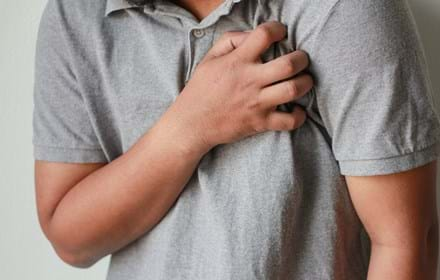
WHO reports global cases of diabetes quadrupled over last 35 years
Report published on World Diabetes Day (14th November) says 800 million living with diabetes worldwide.
Latest figures reveal that the number of adults living with diabetes worldwide is more than 800 million.
The figure represents a four-fold increase since 1990, according to a report published to coincide with World Diabetes Day, organised by the International Diabetes Federation and the World Health Organization (WHO).
World Diabetes Day is the world’s largest diabetes awareness campaign reaching a global audience of more than 1 billion people in over 160 countries. It is marked every year on 14th November, the birthday of Sir Frederick Banting, who co-discovered insulin along with Charles Best in 1922.
The report published in The Lancet includes study results conducted by the NCD Risk Factor Collaboration (NCD-RisC) with support from the WHO.
The findings highlight the scale of the diabetes epidemic and authors advise an “urgent need for stronger global action to address both rising disease rates and widening treatment gaps, particularly in low- and middle-income countries (LMICs)”.
The report added: “Most survey data did not separate type 1 and type 2 diabetes in adults because distinguishing between these disorders can be challenging in adults. However, most (85–95%) cases of diabetes in adults are type 2.”
Dr Tedros Adhanom Ghebreyesus, Director-General at the WHO, said: “We have seen an alarming rise in diabetes over the past three decades, which reflects the increase in obesity [in cases of type 2 diabetes], compounded by the impacts of the marketing of unhealthy food, a lack of physical activity and economic hardship.
“To bring the global diabetes epidemic under control, countries must urgently take action. This starts with enacting policies that support healthy diets and physical activity, and, most importantly, health systems that provide prevention, early detection and treatment.”

The study reported that from 1990 to 2022 the global number diabetes cases in adults rose from 7% to 14%.
The largest increases were found in LMICs, where diabetes rates have soared while researchers said treatment access remains persistently low.
Study authors noted “this trend has led to stark global inequalities” as in 2022, almost 450 million adults aged 30 and older – around 59% of all adults with diabetes – remained untreated, marking a 3.5-fold increase in untreated people since 1990. Of people living with untreated diabetes, 90% are living in LMICs.
In addition, the study reported substantial global differences in diabetes rates, with the number of cases of diabetes among adults aged 18 and older around 20% in the WHO South-East Asia and the Eastern Mediterranean Regions.
These two regions, together with the African Region, have the lowest rates of diabetes treatment coverage, with fewer than 4 in 10 adults with diabetes taking glucose-lowering medication for their diabetes.

Image © WHO / Conor Ashleigh
Thawarat Atichartsintop tests the blood sugar levels of Dr Viroj from the Ministry of Health. Thawarat is the senior nurse at the Bangkhen community health centre and give a presentation to Dr Viroj on the centres programs and innovations.
On World Diabetes Day the WHO has also launched a new global monitoring framework on diabetes.
This product aims to form a “crucial step in the global response”, providing comprehensive guidance to countries in measuring and evaluating diabetes prevention, care, outcomes and impacts.
By tracking key indicators such as glycaemic control, hypertension and access to essential medicines, countries can improve targeted interventions and policy initiatives. This standardised approach empowers countries to prioritize resources effectively, driving significant improvements in diabetes prevention and care.
WHO’s Global Diabetes Compact, launched in 2021, includes the vision of reducing the risk of diabetes, and ensuring that all people who are diagnosed with diabetes have access to equitable, comprehensive, affordable and quality treatment and care.
The work undertaken as part of the Compact will also support the prevention of type 2 diabetes from obesity, unhealthy diet and physical inactivity.
In addition, the same year, a diabetes resolution was endorsed at the World Health Assembly urging Member States to raise the priority given to the prevention, diagnosis and control of diabetes as well as prevention and management of risk factors such as obesity.
In 2022, WHO established five global diabetes coverage targets to be achieved by 2030. One of these targets is to ensure that 80% of people with diagnosed diabetes achieve good glycaemic control.
The WHO said the latest report “underlines the scale and urgency of action needed to advance efforts to close the gap”.
Read the report in The Lancet
Read more about World Diabetes Day
Read the DRWF series of diabetes information leaflets here
I would like to make a regular donation of
I would like to make a single donation of
There are lots of ways to raise money to support
people living with all forms of diabetes.
Bake, Swim, Cycle, Fly ... Do It For DRWF!
Fundraise with us
Recent News


